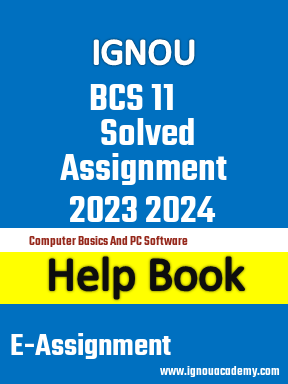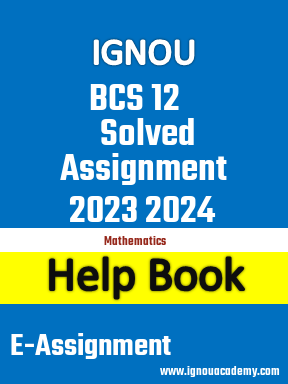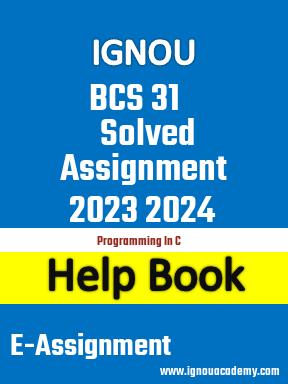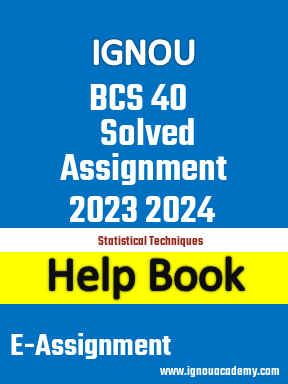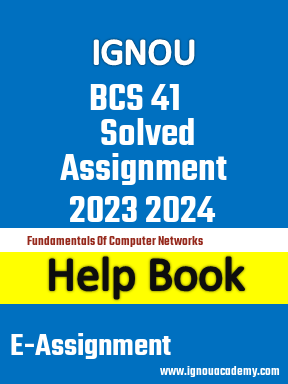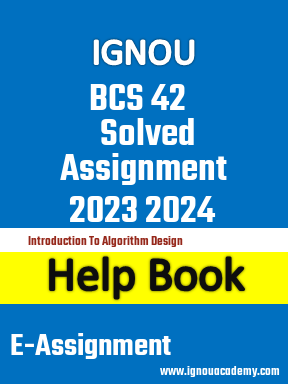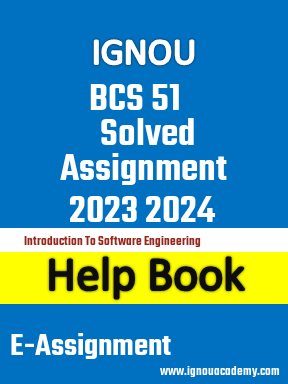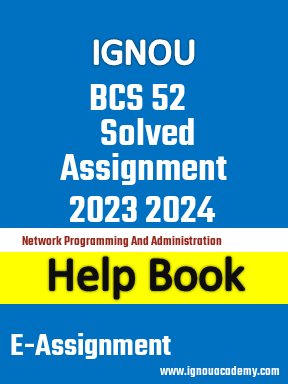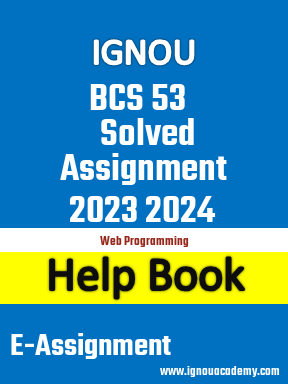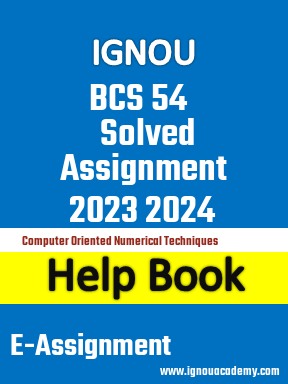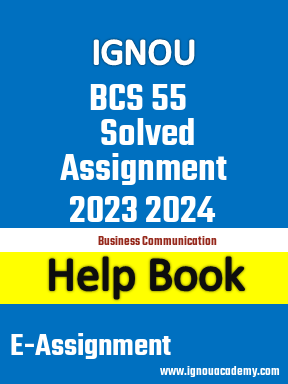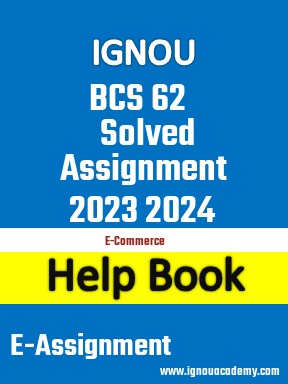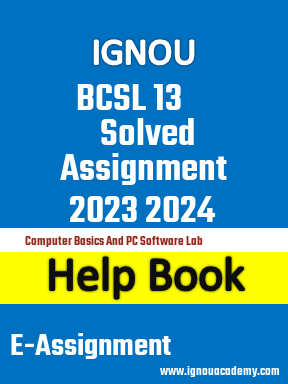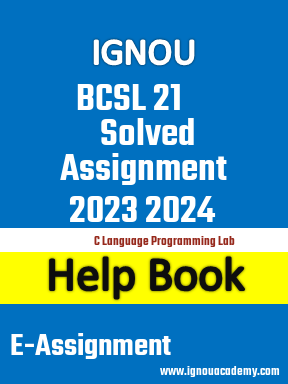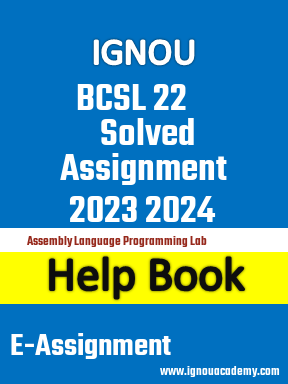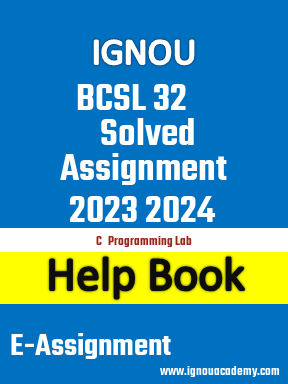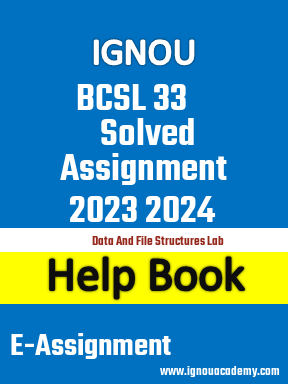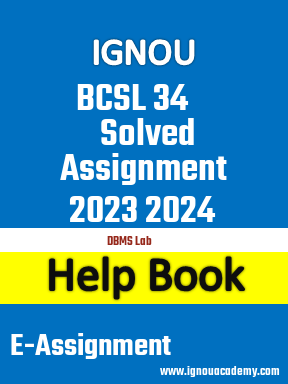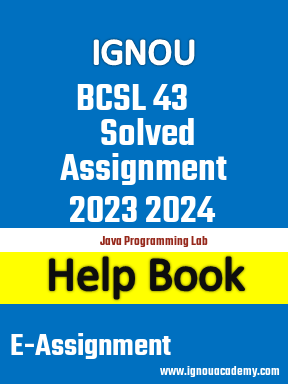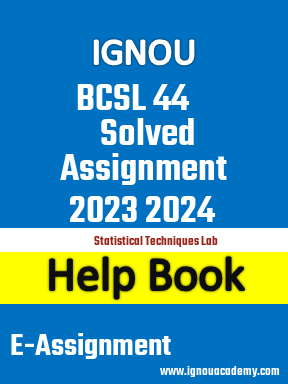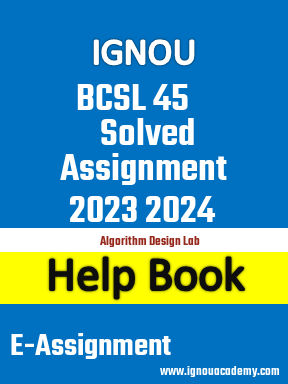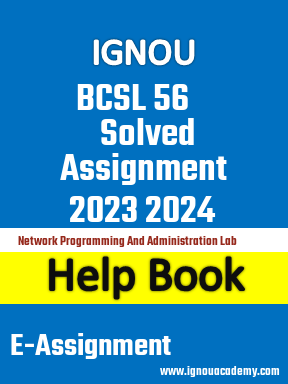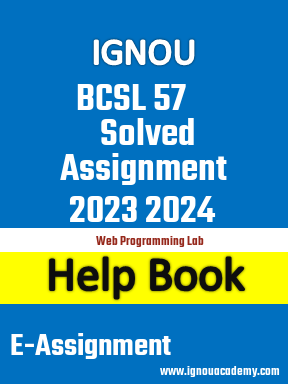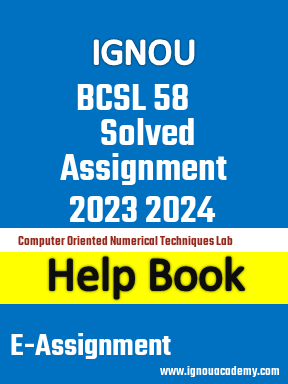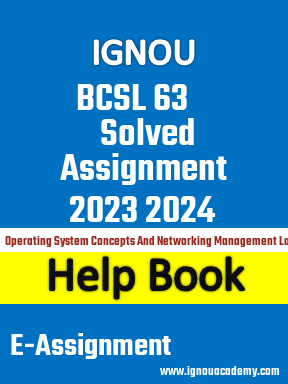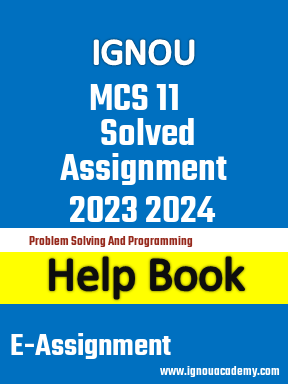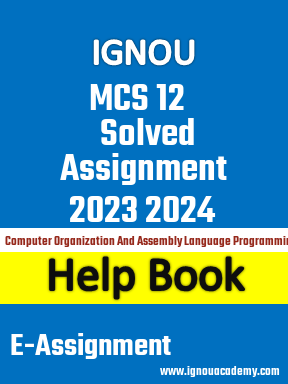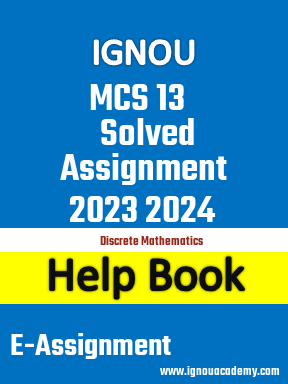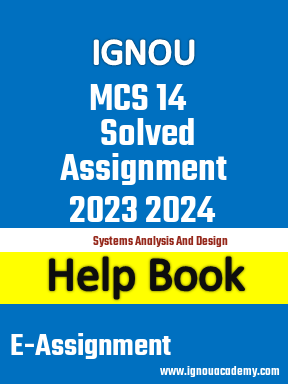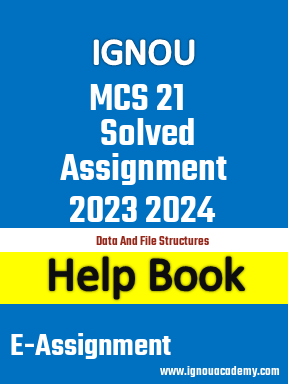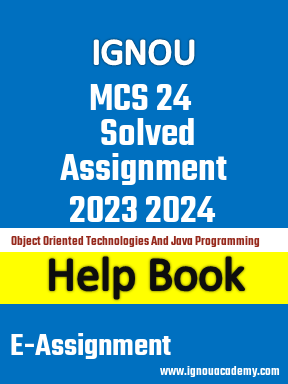My Cart
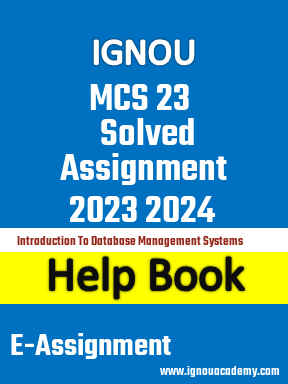
|
|
IGNOU MCS 23 2023 2024 Solution
IGNOU MCS 23 2023 2024 Solution|
|
| Title Name | IGNOU MCS 23 2023 2024 Solution |
|---|---|
| Type | Soft Copy (E-Assignment) .pdf |
| University | IGNOU |
| Degree | BACHELOR DEGREE PROGRAMMES |
| Course Code | BCA |
| Course Name | Bachelor of Computer Applications |
| Subject Code | MCS 23 |
| Subject Name | Introduction to Database Management Systems |
| Year | 2023 2024 |
| Session | - |
| Language | English Medium |
| Assignment Code | MCS-023/Assignmentt-1//2023-24 |
| Product Description | Assignment of BCA (Bachelor of Computer Applications) 2023-24. Latest MCS 023 2023-24 Solved Assignment Solutions |
| Last Date of IGNOU Assignment Submission | Last Date of Submission of IGNOU MCS-023 (BCA) 2023-24 Assignment is for January 2023 Session: 30th September, 2023 (for December 2023 Term End Exam). Semester Wise January 2023 Session: 30th March, 2024 (for June 2024 Term End Exam). July 2023 Session: 30th September, 2023 (for December 2023 Term End Exam). |
| Assignment Code | MCS 23/2023 2024 |
|
|
Questions Included in this Help Book
Ques 1.
Draw and explain the detailed system architecture of DBMS
Ques 2.
Discuss the 3-level architecture of DBMS. Explain how it leads to data independence.
Ques 3.
What are integrity constraints? Discuss the various types of integrity constraints that can be imposed on database
Ques 4.
What is the two phase locking protocol? How does it guarantee Serializability? Explain
Ques 5.
Discuss the anomalies due to insertion, updation and deletion in a relation that is not in QNF. Illustrate with the help of an example.
Ques 6.
List and explain the 4 basic properties of a Transaction with the help of appropriate examples.
Ques 7.
Explain the Log-based recovery scheme with the help of an example
Ques 8.
Explain the need of Distributed DBMS over Centralized DBMS. Also give the structure of Distributed DBMS.
Ques 9.
Creation of views
Ques 10.
Creation of sequences
Ques 11.
Outer join
Ques 12.
To give access permission to any user
Ques 13.
A bookshop has a huge collection of books to sell them online and therefore requires a database to track its sales. For each book they store the Title, Author(s), name, Publisher, Volume, ISBN No., Price, Stock (no. of copies), Year of publication, etc. To help the customers to search the book, they require that each book is assigned to one or more categories such as Engineering, Sciences, Fiction, Literature, Applications, etc. If at all, any discounts that are there for certain books, need to be notified on the site (best-buy offer). To buy a book, a customer needs to register on the site. Also it maintains the profile of the user and also their earlier purchases. The bookshop also sends "Newsletter" to all the registered users to update them about the publications.Identify the entities, relationships, constraints and cardinality and construct an ER diagram for the above mentioned specifications. List your assumptions and clearly indicate the cardinality mappings as well as any role indicators in your ER diagram.
Ques 14.
Consider the following tables:
WORKS(Pname, Cname, Salary)
LIVES(Pname, Street, City)
LOCATED(Cname, City)
MANAGER(Pname, Mname)
Write a query in SQL for the following:
(i) List the names of the people who work for the company Wipro' along with the cities they live in.
(ii) Find the people who work for the company `Infosys' having salary greater than 50,000.
(iii) List the names of the people, along with the street and city addresses.
(iv) Find the persons whose salaries are more than that of all of the 'Oracle' employees.
(v) Find the names of the persons who do not work in `Infosys'.
Make suitable assumptions, if any
Ques 15.
Compute the closure of the following set F of functional dependencies for relation schema
R = (A, B, C, D, E).
A → BC
CD → E
B → D
E → A
List the candidate keys for R
Ques 16.
Consider the relation R (A, B, C, D, E) and the set of functional dependencies :-
F(A → D, {A,B} → C, D → E)
Assume that the decomposition of R into {R1 (A, B, C) and R2 (A, D, E)}.
Is this decomposition lossless? Justify?
|
|
Related Assignments
IGNOU Doubts & Queries
Click to Contact Us
Call - 9199852182 Call - 9852900088 myabhasolutions@gmail.com WhatsApp - 9852900088